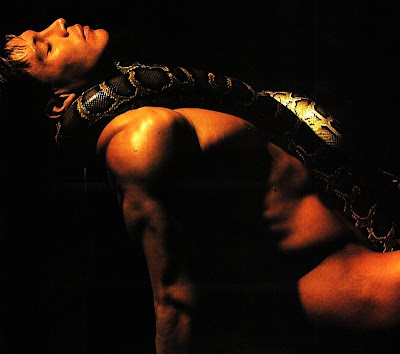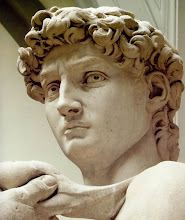Plato on the subject of beauty: "The man who has been properly nurtured in this area(beauty) will be keenly aware of things which have been neglected, things not beautifully made by art or nature. He will rightly resent them, he will praise beautiful things, rejoice in them, receive them into his soul, be nurtured by them and become both good and beautiful in character."
THE human figure occupies a central place in Greek art and particularly in Greek sculpture. The Greeks believed profoundly in the value of man.The gods are thus almost always represented in human form. The human
body is a constantly recurring motif in Greek art. Soaring temple
columns with their finely-chiselled lines recall the slender bodies of
Greek youths. In paintings and sculptured reliefs the beauty of the human form in repose or in action stands out against a neutral background. Only by representing in a purely human form the men they honoured, the
gods they worshipped and the heroes of their legends could the ancient
Greeks understand them and communicate with them, almost as equals.
Taken from The Greek ideal - immortals and man in Greek art - Between the Visible and the Invisible by George Dontas
Sculpture of the Greek Classical
Period (480 - 323 B.C.)
The
Classical period of Ancient Greece produced some of the most
exquisite sculptures the world has ever seen. The art of the
Classical Greek style is characterized by a joyous freedom of
movement, freedom of expression, and it celebrates mankind as
an independent entity (atomo). During this period, artists begin
to expand the formal aesthetic boundaries while they worked
in expressing the human figure in a more naturalistic manner.
They were able to replace the strict asymmetry of the figure
with a free flowing form more true to life, while they approached
an ideal aesthetic vision through stone and bronze.


Riace Bronze Warriors 450BC
The Hellenistic Period (323 - 31 BC.)
The Hellenistic period begins in 323 with the death of Alexander the Great and ends with the battle of Actio in 31 BC. While Philip of Macedon conquered and united the Greek city-states, his son Alexander the Great embraced on a campaign that found him the conqueror of a vast empire which included Greece, Persia, the Near East, and Egypt. During this period the city-states begin to give way to a more global culture, and the entire Mediterranean sea and the Middle East flourish in a background of conflict, commerce, and cross-cultural influence, with the Greek ideals and language dominating the scene.
During the Hellenistic period art underwent dramatic transformations and evolved on the road paved previously by the Classical artist. While the Classical Greek concepts were not entirely abandoned, the artist of the Hellenistic era expanded his formal horizons with dramatic posing, sweeping lines, and high contrast of light, shadow and emotions. The conventions and rules of the classical period gave way to the experimentation and a sense of freedom that allowed the artist to explore his subjects from different unique points of view. - Greek Landscapes.com
The Laocoon group - Priest of Troy with his two sons struggling with the serpents sent by Poseidon
The Uffizi Wrestlers 3rd Century BC

Bronze replica

The Barberini Faun (a sleeping satyr) 200 B.C.


















No comments:
Post a Comment